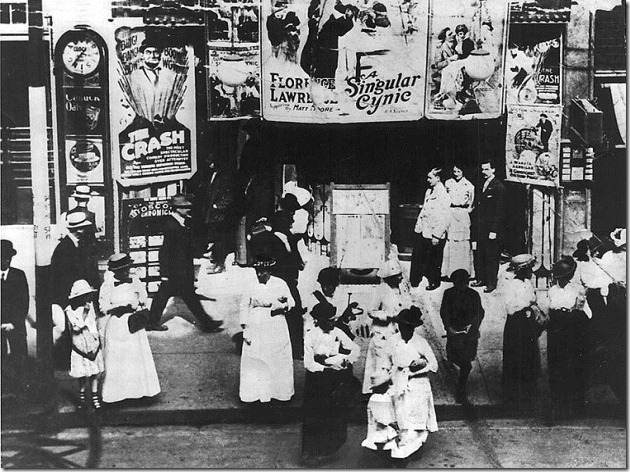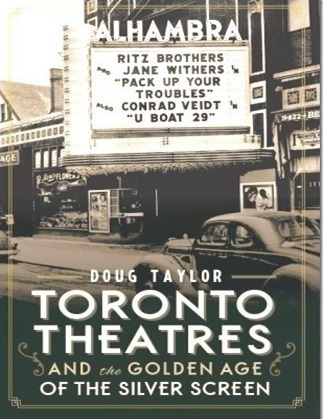Today, Toronto is known as one of the great film centres of the world. The Toronto International Film Festival clearly demonstrates the city’s love affair with the silver screen. Thousands of people stand in line each year to view the numerous films that the festival offers. Despite TV and modern devices where films can be viewed, Torontonians continue to love the “big-screen experience.”
Where and when did this romance with movies begin?
The site where Torontonians first experienced the world of film
Toronto’s fascination with the silver screen began on the southeast corner of Yonge Street and Adelaide Street East, where today, a high-rise tower of glass and steel is located. In the final decade of the 19th century, this was the site of Robertson’s Musee. When it opened in 1890, it offered a curio shop, acts of magic, dazzling jugglers, musicians, and aerialists. On the second floor it possessed a wax museum, and on the roof were cages with live animals. However, all that was about to change. When the Musee opened its doors on 31 August in 1896, they had no idea that they were introducing a form of entertainment that would begin a permanent love affair between Torontonians and the world of cinema.
Robertson’s Musee featured “moving pictures,” projected by a “Vitascope,” the miraculous new invention of Thomas Edison. The movie experience in 1896 was quite simple compared to the films that would be seen in the years ahead. It was a series of films, each running less than a minute. Some of the clips simply depicted a man galloping past on a horse or an automobile appearing on the scene, and then, departing. Because the Musee charged ten cents admission, it became known as the “Dime Museum.” Although the quality of the films was crude compared to today, a newspaper reported that the “. . . machine projects apparently living figures and scenes on a canvas screen . . . it baffles analysis and delights immense audiences.” It was a momentous moment in the history of Toronto’s entertainment scene.
Robertson’s Musee was sold several times and managed by different proprietors. In 1899, it became the first location of Shea’s Theatre, which later relocated to Bay Street, a short distance north of Queen Street. Unfortunately, the building at Yonge and Adelaide was destroyed by fire in 1905. In 1998, the Toronto Historical Board placed a plaque to commemorate “Toronto’s first moving picture show,” on the Yonge Street facade of the building that is located on the site today. Much of the information for this post was obtained from the historic plaque.
Historic plaque on the building at Yonge and Adelaide Streets
Toronto’s First Permanent Movie Theatre
After Robertson’s Musee introduced Toronto to the world of film, other establishments soon realized the possibilities of the new form of entertainment. In the months ahead, in the downtown area, films were shown in small shops that had been converted for the purpose, or in backrooms where bed sheets were hung against a wall. Patrons stood to watch or were accommodated on kitchen chairs. However, because the locations were constantly changing, it became evident that a permanent location, offering more space and better seating was required.
In March of 1906, ten years after Robertson’s Musee had opened, Toronto-born John C. Griffin inaugurated the first permanent space for showing moving pictures. He named it the “Theatorium.” It was in a rented space at 183 Yonge Street. The 150-seat theatre, with a mere 17-foot frontage on Yonge, and only 100-foot depth, was on the east side of the street, a short distance north of Queen Street East. The first feature shown was an Edison Production, “The Train Wreckers,” produced in 1905. He added several vaudeville acts to each screening, a formula that was quickly copied by the theatres that followed in Griffin’s wake.
“The Theatorium” was renamed the “Red Mill” in 1911. Today, the Elgin/Winter Garden complex at 189 Yonge Street is located on a portion of the site.
This photo from the City of Toronto Archives was taken on 8 August 1913. It shows the “Theatorium” after it was renamed the “Red Mill Theatre.” The feature film is “The Red Girl’s Sacrifice,” a production of the Bison Motion Picture Company. It starred Mona Darkfeather and was directed by Frank Montgomery. The cornice of the old Bank of Montreal, on the northeast corner of the intersection of Yonge and Queen is visible in the upper right-hand corner of the photo. Today, the bank building is incorporated into an office tower, and its banking hall contains a subway station.
This photo of a portion of the “Red Mill Theatre” is from the City of Toronto Archives, was also taken on 8 April 1913. A poster for “The Red Girl’s Sacrifice” can be seen. The boy leaning against the lamp pole appears curious about the photographer, or perhaps his sullen look is because he does not possess the funds to enter the theatre. Even if he had the admission price, his parents would likely not have allowed him to enter. In this era, many of the churches condemned movie houses as they considered them “dens of iniquity.” The educated people of the city thought that films were low-class and vulgar.
The “Theatorium Theatre entrance on Yonge Street in 1914. The signs on either side of the entrance create the illusion that the theatre was much larger than its 17-foot width. One of the movies shown in the above photo is “The Singular Cynic,” starring Florence Lawrence.” It was released in 1914, and is about a woman who must choose between two suitors, but surprises them both by choosing a third. Photo, City of Toronto Archives.
To view the Home Page for this blog: https://tayloronhistory.com/
Links to other posts about the history of Toronto and its buildings:
https://tayloronhistory.com/2013/10/08/links-to-historic-architecture-of-torontotayloronhistory-com/
Links to posts about Toronto’s movie houses—past and present.
https://tayloronhistory.com/2013/10/09/links-to-toronto-old-movie-housestayloronhistory-com/
Recent publication entitled “Toronto’s Theatres and the Golden Age of the Silver Screen,” by the author of this blog. The publication explores 50 of Toronto’s old theatres and contains over 80 archival photographs of the facades, marquees and interiors of the theatres. It also relates anecdotes and stories from those who experienced these grand old movie houses.
To place an order for this book:
Theatres Included in the Book
Chapter One – The Early Years—Nickelodeons and the First Theatres in Toronto
Theatorium (Red Mill) Theatre—Toronto’s First Movie Experience and First Permanent Movie Theatre, Auditorium (Avenue, PIckford), Colonial Theatre (the Bay), thePhotodome, Revue Theatre, Picture Palace (Royal George), Big Nickel (National, Rio), Madison Theatre (Midtown, Capri, Eden, Bloor Cinema, Bloor Street Hot Docs), Theatre Without a Name (Pastime, Prince Edward, Fox)
Chapter Two – The Great Movie Palaces – The End of the Nickelodeons
Loew’s Yonge Street (Elgin/Winter Garden), Shea’s Hippodrome, The Allen (Tivoli), Pantages (Imperial, Imperial Six, Ed Mirvish), Loew’s Uptown
Chapter Three – Smaller Theatres in the pre-1920s and 1920s
Oakwood, Broadway, Carlton on Parliament Street, Victory on Yonge Street (Embassy, Astor, Showcase, Federal, New Yorker, Panasonic), Allan’s Danforth (Century, Titania, Music Hall), Parkdale, Alhambra (Baronet, Eve), St. Clair, Standard (Strand, Victory, Golden Harvest), Palace, Bedford (Park), Hudson (Mount Pleasant), Belsize (Crest, Regent), Runnymede
Chapter Four – Theatres During the 1930s, the Great Depression
Grant ,Hollywood, Oriole (Cinema, International Cinema), Eglinton, Casino, Radio City, Paramount, Scarboro, Paradise (Eve’s Paradise), State (Bloordale), Colony, Bellevue (Lux, Elektra, Lido), Kingsway, Pylon (Royal, Golden Princess), Metro
Chapter Five – Theatres in the 1940s – The Second World War and the Post-War Years
University, Odeon Fairlawn, Vaughan, Odeon Danforth, Glendale, Odeon Hyland, Nortown, Willow, Downtown, Odeon Carlton, Donlands, Biltmore, Odeon Humber, Town Cinema
Chapter Six – The 1950s Theatres
Savoy (Coronet), Westwood
Chapter Seven – Cineplex and Multi-screen Complexes
Cineplex Eaton Centre, Cineplex Odeon Varsity, Scotiabank Cineplex, Dundas Square Cineplex, The Bell Lightbox (TIFF)
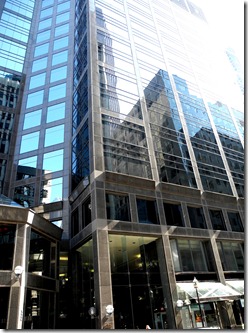
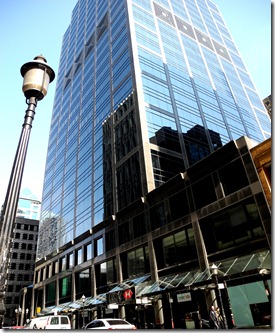
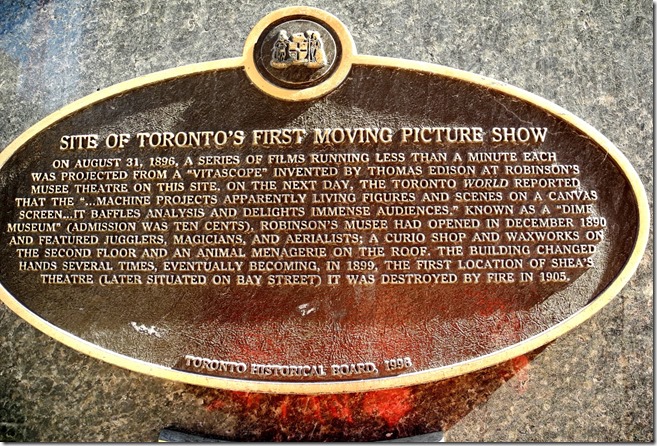
![fo1231_f1231_it0640[1] Apr. 8, 1913 fo1231_f1231_it0640[1] Apr. 8, 1913](https://tayloronhistory.com/wp-content/uploads/2013/03/fo1231_f1231_it06401-apr-8-1913_thumb.jpg)
![f1231_it0639[1] f1231_it0639[1]](https://tayloronhistory.com/wp-content/uploads/2013/03/f1231_it06391_thumb.jpg)
